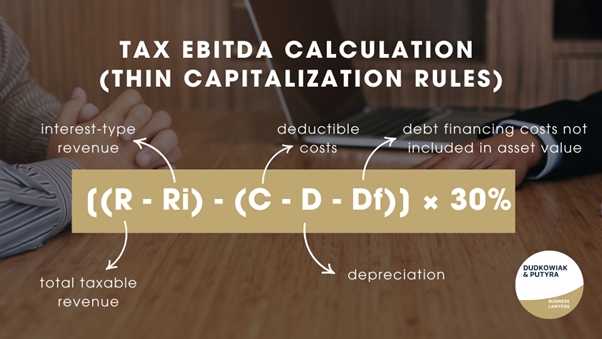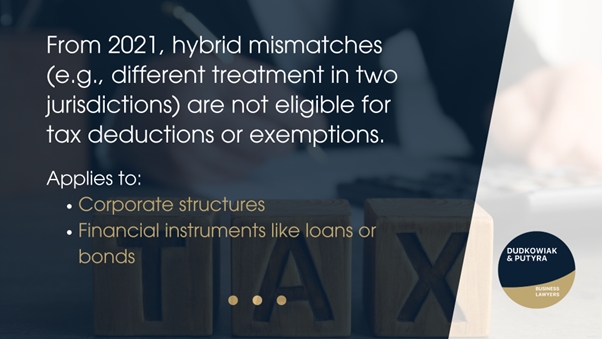- within Tax topic(s)
- in Asia
- with readers working within the Business & Consumer Services, Technology and Media & Information industries
- within Tax topic(s)
- in Asia
- in Asia
- in Asia
- in Asia
- in Asia
- in Asia
- in Asia
- in Asia
- with readers working within the Business & Consumer Services and Media & Information industries
- within Tax, International Law and Corporate/Commercial Law topic(s)

Introduction to Corporate Income Tax (CIT) in Poland
Corporate Income Tax (CIT) in Poland is a crucial element of the national tax system, applying to limited liability companies, joint-stock companies, limited partnerships, limited joint-stock partnerships, and certain non-corporate organizations. The primary goal is to tax the income of legal entities.
CIT Rates:
- Standard rate: 19%
- Reduced rate: 9% (for small taxpayers and startups)
How Taxable Income is Calculated
Taxable income under CIT is the difference between revenue and tax-deductible expenses.
- Tax-deductible costs must be directly connected to revenue generation.
- If deductible costs exceed revenue, the taxpayer reports a tax loss.
The 9% CIT Rate - Who Can Benefit?
Since 2019, the 9% CIT rate has been available for taxpayers whose annual revenue does not exceed EUR 2 million.
Conditions:
- Must have the status of a small taxpayer.
- EUR to PLN conversion is based on NBP exchange rate from the first business day of October of the prior tax year.
Exclusions:
- Entities formed via certain restructurings.
- Startups exceeding the EUR 2M threshold.
CIT Return Deadlines and Payments
Companies must file their annual CIT return within 3 months after the end of the tax year.
- For calendar year taxpayers, the deadline is March 31 of the following year.
- The same deadline applies to tax payment.
Revenue Sources and Loss Utilization
CIT differentiates between two income sources:
- Capital gains - e.g., dividends, share disposals
- Operating income - from business activity
Loss Carry-Forward Rules:
- Carry forward losses for up to 5 years
- Max 50% deduction per year or one-time deduction of up to PLN 5 million
Interest Deductibility and Debt Financing
Rules:
- Interest payments can be deducted once paid or capitalized.
- Investment-phase interest increases asset value and is deductible via depreciation or upon disposal.
Tax EBITDA Calculation (Thin Capitalization Rules)
Formula:
[(R - Ri) - (C - D - Df)] × 30%
- R - total taxable revenue
- Ri - interest-type revenue
- C - deductible costs
- D - depreciation
- Df - debt financing costs not included in asset value
Limitation: greater of PLN 3 million or 30% of tax EBITDA.

Exemptions and Special Considerations
- Public infrastructure projects are exempt
- Transfer pricing rules can limit deductibility if debt is excessive or interest is non-market level
Initial Value and Depreciation
Key Rules:
- Minimum asset value: PLN 10,000
- Straight-line depreciation is the default
- Accelerated, reduced, and one-off depreciation available
Included in Initial Value:
- Purchase cost
- Installation and transport
- Investment-period interest
- FX differences and improvements > PLN 10,000
Minimum Tax on Commercial Buildings
- Rate: 0.035% monthly
- Applies to rented/leased properties > PLN 10 million value
- May be offset against CIT or refunded
Minimum Income Tax (from 2024)
Applies to entities that:
- Report an operating loss, or
- Have income-to-revenue ratio ≤ 2%
Rate: 10% of calculated base (or 3% simplified)
Exemptions:
- New companies (first 3 years)
- 30% drop in revenue
- Small taxpayers
- Bankruptcy or restructuring
Hybrid Mismatches and Deductibility Restrictions
From 2021, hybrid mismatches (e.g., different treatment in two jurisdictions) are not eligible for tax deductions or exemptions.
Applies to:
- Corporate structures
- Financial instruments like loans or bonds

Shifted Income Tax
Introduced in 2022, targets cross-border payments to related entities outside Poland.
Covered transactions:
- Intangible services (e.g., consulting)
- Royalties
- Debt financing
Rate: 19%
Applies when:
- The recipient is taxed at <14.25% or exempt
- The costs exceed 3% of total tax-deductible costs
Exemptions: Entities in the EU/EEA with real business activities.
Estonian CIT - Deferral-Based Model
Benefits:
- Tax deferral until profit distribution
- No separate tax accounting required
- Effective tax rates: 20% (small businesses), 25% (others)
Eligibility:
- Shareholders must be individuals
- No holdings in other companies
Tax is triggered only when:
- Profits are distributed or
- Assets are transferred
Polish Holding Company (PSH)
Key Benefits:
- 100% CIT exemption on dividends and capital gains
Conditions:
- Holding ≥10% shares for ≥2 years
- No links to tax havens
- Not part of a tax capital group
Bad Debt Relief in CIT
For creditors: Reduce tax base if unpaid >90 days from the due date
For debtors: Increase tax base for overdue liabilities >90 days from the due date
Applies if:
- Both parties are Polish CIT/PIT taxpayers
- The transaction is business-related
Exclusions:
- Related-party transactions
- Compensation and set-offs
Poland's Corporate Income Tax system is layered and offers a variety of models, rates, and reliefs. Choosing the right structure - whether the classic 19%, reduced 9%, Estonian model, or holding company strategy - can lead to significant financial and operational advantages. Businesses should plan strategically and consult tax professionals to maximize compliance and benefits.
Need More Tax Insights?
Visit our blog for in-depth articles on taxation in Poland, including VAT, WHT, bad debt relief, and real-life compliance strategies.
FAQ - Frequently Asked Questions About CIT in Poland

- Is every company subject to CIT in
Poland?
No - only specific legal forms like LLCs and JSCs are taxed. - What qualifies as a "small
taxpayer"?
Annual revenue under EUR 2 million (converted to PLN). - How long can I carry forward a loss?
Up to 5 years, max 50% per year or a one-time PLN 5 million deduction. - Can new businesses use the 9% CIT rate?
Yes, until they exceed the revenue cap. - What's the difference between classic and Estonian
CIT?
Estonian CIT defers taxation until dividends are paid. - Must I pay the minimum income tax if I have a
loss?
Yes, unless you qualify for an exemption.
The content of this article is intended to provide a general guide to the subject matter. Specialist advice should be sought about your specific circumstances.


